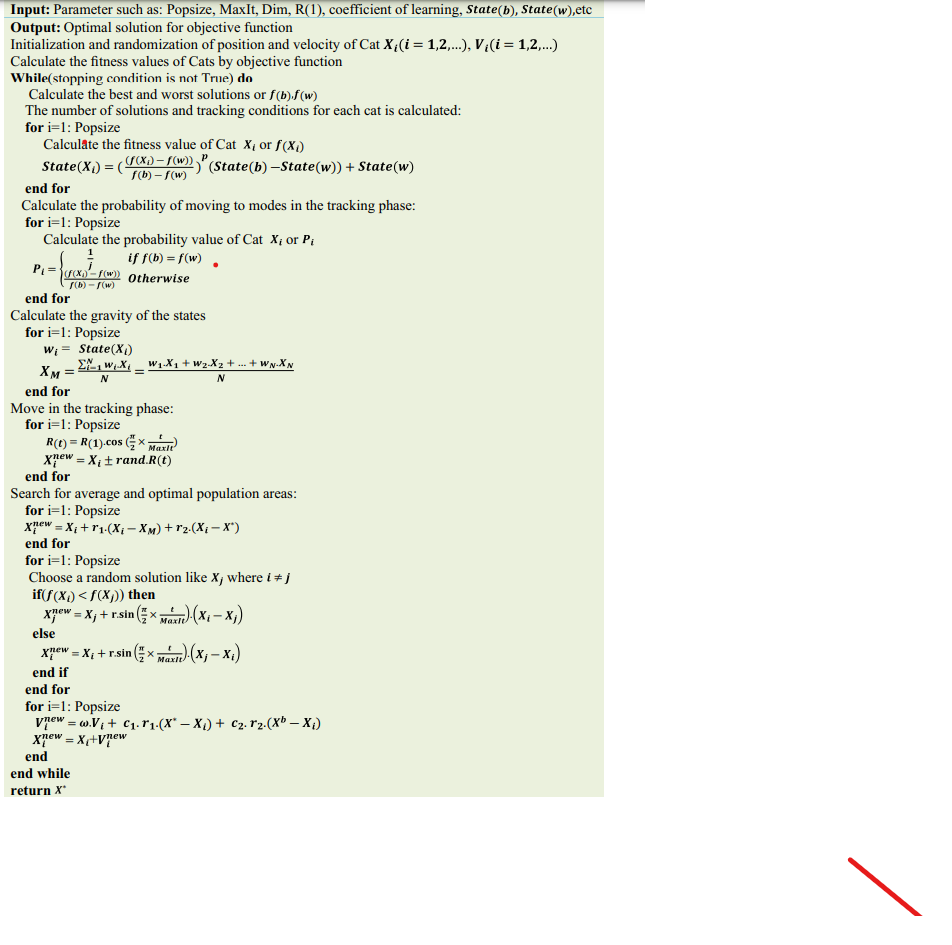Answered step by step
Verified Expert Solution
Question
1 Approved Answer
Input: Parameter such as: Popsize, MaxIt, Dim, R(1), coefficient of learning, State(b), State (w),etc Output: Optimal solution for objective function Initialization and randomization of

Input: Parameter such as: Popsize, MaxIt, Dim, R(1), coefficient of learning, State(b), State (w),etc Output: Optimal solution for objective function Initialization and randomization of position and velocity of Cat X(i = 1,2,...), V(i = 1,2,...) Calculate the fitness values of Cats by objective function While(stopping condition is not True) do Calculate the best and worst solutions or f(b).f(w) The number of solutions and tracking conditions for each cat is calculated: for i=1: Popsize Calculate the fitness value of Cat X, or f(x1) State (X)=(x)-(w)))" (S end for f(b)-f(w) " (State(b) State(w)) + State(w) Calculate the probability of moving to modes in the tracking phase: for i=1: Popsize Calculate the probability value of Cat X or Pi P = end for if f(b) = f(w) f(w) Otherwise (b)-[(w) Calculate the gravity of the states for i=1: Popsize W = State(XI) XM=1XW + W-X2 + ... + WN-XN end for N Move in the tracking phase: for i=1: Popsize R(t) = R(1).cos (Maxit) xnew Xrand.R(t) end for N Search for average and optimal population areas: for i=1: Popsize xnew = X +r1-(X XM) +12.(Xi X*) end for for i=1: Popsize Choose a random solution like X, where i + j if(f(x))
Step by Step Solution
There are 3 Steps involved in it
Step: 1

Get Instant Access to Expert-Tailored Solutions
See step-by-step solutions with expert insights and AI powered tools for academic success
Step: 2

Step: 3

Ace Your Homework with AI
Get the answers you need in no time with our AI-driven, step-by-step assistance
Get Started


